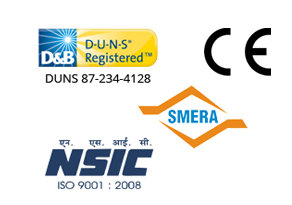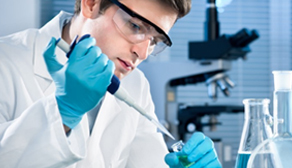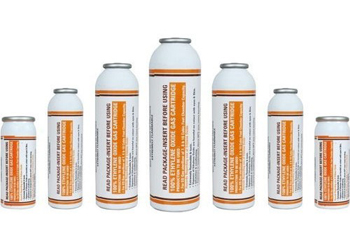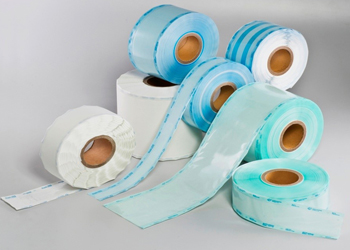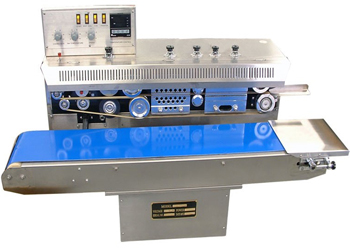In the realm of medical device sterilisation, Ethylene Oxide gas remains a gold standard – particularly for heat- and moisture-sensitive devices. However, EO sterilization is not merely about introducing gas into a sealed chamber. It is an intricate process governed by critical parameters, among which vacuum and pressure control are paramount. Maintaining precise control over these variables ensures consistent sterilization outcomes, optimal penetration of EO gas and adherence to global regulatory standards.
As sterilizing machines become more advanced, the integration of automated vacuum and pressure monitoring systems is essential for reliability and process validation. This article explores the science and engineering behind vacuum and pressure control in ETO systems, highlighting how these functions are vital to the performance and safety of medical sterilizer machines.
EO Sterilization: A Pressure-Driven Process
ETO sterilisation relies on the ability of EO gas to diffuse and penetrate packaging and device materials at low temperatures. This low-temperature process is made feasible and effective through carefully engineered vacuum and pressure cycles that prepare the load and drive EO gas into even the most intricate devices.
The sterilization cycle in an ETO machine typically involves multiple phases:
- Temperature
- Pre-vacuum
- Humidification
- EO gas injection
- Exposure
- Post-vacuum
- Aeration
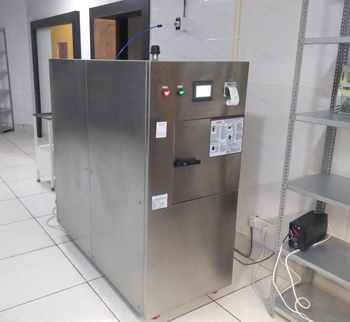
Each phase is heavily dependent on achieving and maintaining specific vacuum or pressure levels.
Without accurate vacuum, residual air in the chamber can hinder gas penetration. Similarly, inconsistent pressure during EO injection or evacuation can lead to underexposure or over-saturation, resulting in ineffective sterilization or damaged equipment.
Temperature Conditioning: Foundation for Effective Sterilization
Before any vacuum or gas phase begins, the chamber and load are brought to a target temperature range suitable for EO sterilization. This is critical because EO gas activity is highly temperature-dependent. Inadequate or uneven heating can result in poor gas distribution and suboptimal microbial inactivation. Therefore, temperature control is the first phase, ensuring the load reaches thermal equilibrium and is ready for subsequent stages.
Each phase is heavily dependent on achieving and maintaining specific vacuum, pressure or temperature levels.
Without accurate vacuum, residual air in the chamber can hinder gas penetration. Similarly, inconsistent pressure during EO injection or evacuation can lead to underexposure or over-saturation, resulting in ineffective sterilization or damaged equipment.
Vacuum Control: Gateway to Gas Penetration and Sterility Assurance
Vacuum control is arguably the most critical element of EO sterilization cycles. It ensures that air is effectively removed from both the chamber and the porous load, allowing EO gas to penetrate freely and uniformly.
Why Deep Vacuum Matters?
A deep vacuum phase eliminates ambient air pockets, creating a low-pressure environment conducive to uniform gas dispersion. Insufficient vacuum can result in sterilizationfailures, where some areas of the load receive inadequate exposure to EO gas.
Sterilisation of medical devices depends on uniform EO contact. Therefore, multi-stage vacuum pumps and high-precision sensors are utilized to ensure repeatable vacuum levels before gas introduction. In many cases, systems are configured to halt operation if vacuum thresholds are not met – prioritizing both safety and efficacy.
Sensor Redundancy and Real-Time Feedback
To meet compliance and ensure uninterrupted cycles, ETO sterilizer machines incorporate redundant sensors and real-time feedback systems. These provide data validation for each phase, ensuring vacuum holds are stable. In case of hardware failure, automatic changeovers can maintain the cycle, ensuring no device batch is left partially sterilized.
Pressure Control: Enabling EO Distribution and Safe Chamber Operation
While vacuum removes obstructive gases, pressure control facilitates gas injection, exposure and safe evacuation. Managing the pressurization of EO gas is critical – not only to distribute it evenly but also to comply with safety regulations due to the flammable nature of EO.
EO Injection Under Controlled Pressure
When EO gas is introduced, chamber pressure rises according to a pre-set profile. This pressure must be tightly regulated to ensure gas doesn’t burst packaging seals or escape the chamber. Advanced pressure sensors help monitor and adjust gas flow in real time.
Once exposure is complete, a post-vacuum phase reduces chamber pressure to residual EO gas safely. This transition must be smooth or residual gas may be retained, leading to prolonged aeration or safety risks.
Automated Safeguards and Shutdown Protocols
Many EO systems are equipped with security interlocks and emergency shutdown strategies. These are linked to pressure control systems to ensure that overpressure conditions result in immediate halting of gas supply and activation of exhaust safety mechanisms.
Control Systems and Cycle Automation in ETO Sterilizers
The interplay between vacuum and pressure is governed by sophisticated control systems in today’s sterilisation machines. These systems manage not just sterilization parameters, but also backup protocols, sensor diagnostics, alarming and data logging.
The Need for Pressure Availability and System Redundancy
Redundant actuators, sensors and controllers are often built into the system to ensure sterilization cycles continue uninterrupted even in the face of component failures.
Redundancy and auto-changeover facilities help eliminate downtime and prevent the risk of incomplete EO sterilizes medical device batches. These features are vital for environments handling life-saving medical equipment where re-sterilization is not always an option.
How EO Machine Design Impacts Sterilization Accuracy?
Machine design directly influences vacuum and pressure performance. For example, ETO machine price often reflects the quality of vacuum pumps, number of sensors and level of automation integrated. More expensive models may offer tighter tolerances, faster recovery times and superior pressure profiling.
Additionally, dedicated heating jackets are used to maintain chamber temperature – a variable closely tied to pressure behavior. Poor thermal management can lead to inaccurate gas pressure readings, affecting the entire sterilization cycle.
Conclusion
The effectiveness of EO sterilization hinges on how well vacuum and pressure are controlled throughout the cycle. Inaccuracies in these parameters can lead to suboptimal sterilization, equipment damage or safety risks. Modern medical sterilizer machines overcome these challenges through intelligent systems that manage, monitor and maintain ideal sterilization environments.
Precision in vacuum and pressure handling – starting from accurate temperature conditioning – not only ensures the safety and sterility of medical devices but also drives operational efficiency, compliance and long-term reliability of ETO systems. As demands for sterile processing grow, systems that provide fine control over these critical parameters will continue to lead the market in safe and effective medical device sterilisation.

